How to Achieve Greater Trailer Security
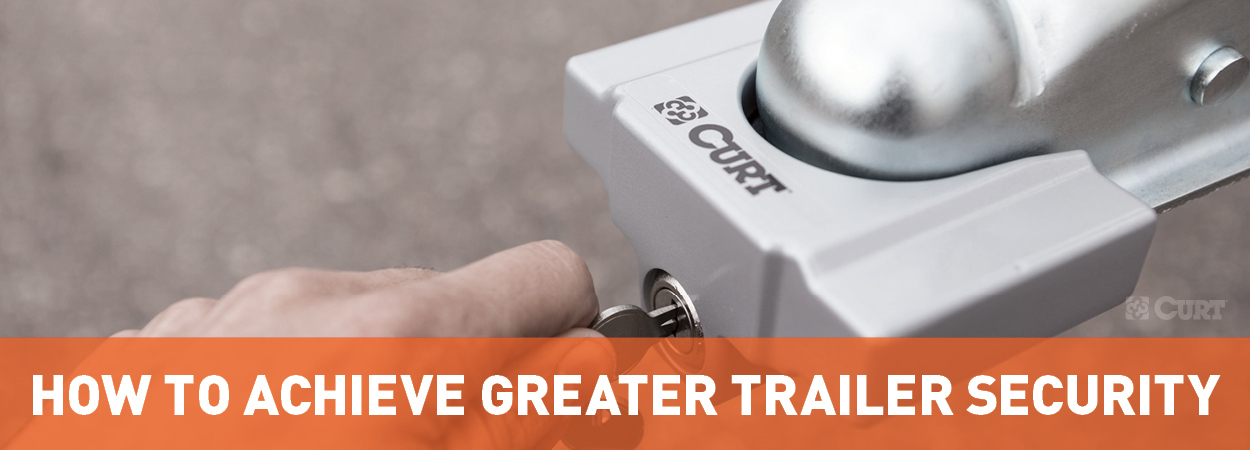

7 Steps to Secure Your Trailer against Theft
Out on the open road, the last thing you want is to have your cargo – or worse, your entire trailer – stolen. It’s up to you to make sure your items, vehicle and trailer are secure for the adventure ahead.
In this guide, we will discuss the best way to lock a trailer and achieve greater trailer security. From hooking up to parking your trailer long-term, preventing theft starts by being prepared.
One lock for all of your trailers!
The CURT tri-ball universal coupler lock #23082 is the ultimate in trailer tongue security, featuring a triple ball insert that fits 1-7/8", 2" and 2-5/16" couplers. The lock can be used while towing or while your trailer is parked, and it has built-in safety points to greatly deter theft and tampering.
Step 1: Install your ball mount with a hitch lock
The first step of hooking up any trailer is to install a ball mount into the receiver tube of your trailer hitch. However, to achieve greater trailer security, you must understand how to lock a trailer. Instead of using a hitch pin, install the ball mount with a hitch lock.
Slide the ball mount into place, line up the holes in the shank and receiver tube, and insert the hitch lock pin through both holes. Then, apply the key-operated cap, cylinder or padlock.
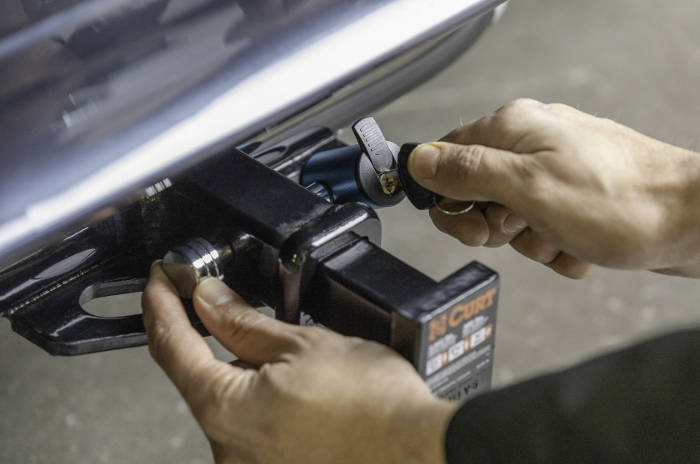

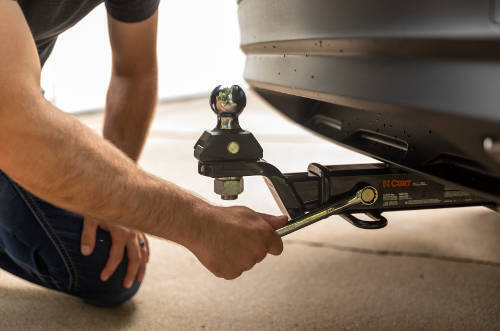

Bonus step: For added trailer security and stability, we recommend using an anti-rattle hitch lock. Not only does this locking device keep your ball mount under lock and key, it also helps prevent the shank from rattling in the receiver tube.
Step 2: Secure the latch with a coupler lock
Couple your trailer to your vehicle, following the standard trailer hookup process.
Engaging the trailer coupler is a key part of that process. However, when your goal is maximum trailer security, it’s worth mentioning how the coupler should be engaged.
After the coupler latching mechanism has been engaged with the trailer ball, install a coupler lock. A trailer coupler lock has a pin that passes through the latch to prevent it from being engaged or disengaged.
Insert the locking pin and then secure the lock cylinder or padlock.
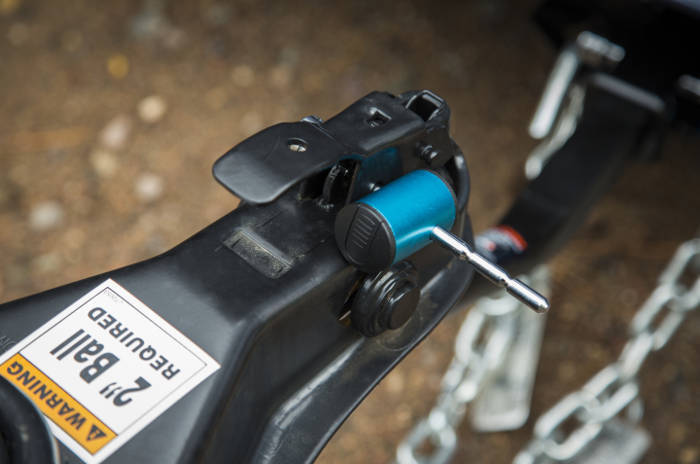

Step 3: Place spare keys in a secure location
With both the hitch lock and coupler lock installed on your towing setup, make sure you place the primary key and spare key in safe spots.
We recommend keeping the primary key on your keychain with your car keys and kept in your pocket. This way, you will always know where they’re located and they’ll always be on hand, ready for use.
For the spare key, consider storing it in your glovebox. It’s important to keep it accessible but not easily found by prying eyes. You may also wish to invest in a magnetic key box that can be hidden somewhere on the underbody of your vehicle.
Keeping the spare key with the trailer is not advised because you may forget to retrieve it after the trailer is parked, leaving it exposed to theft.
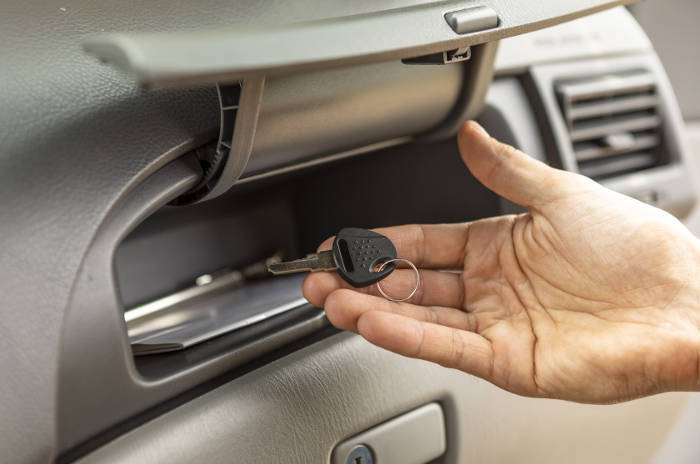

Helpful Hint: All CURT hitch locks, coupler locks and trailer locks come with spare keys. You can store the spare in a safe place or give it to a friend for safe keeping.
Step 4: Install straps or chains over your trailer
With your trailer hooked up, locks in place and loaded with cargo, it’s time to secure that cargo with tie downs. You can use cargo straps to simply keep items from moving around during travel, or you can tie everything down with binder chains or safety chains.
For some cargo, chains may be excessive. But for expensive machinery, equipment or supplies in an open trailer, chains may be exactly what your towing setup needs.
Make sure the straps or chains are taut without crushing the cargo and that they are tied down to solid anchoring points.


Step 5: Driving to your destination and uncoupling your trailer
With your trailer locked on and your cargo tied down, drive to your destination, following all rules of traffic and guidelines for towing a trailer.
If you’re only travelling a short distance without stopping, no additional security will be needed. If you’re traveling a greater distance or planning to make any stops along the way, be sure to park your vehicle and trailer in plain view and if it’s nighttime, park under a street lamp or other light source. Keep your vehicle locked and your keys on your person at all times.
Making stops along the way is also a perfect opportunity to check your vehicle-trailer connection and any cargo you’re hauling.
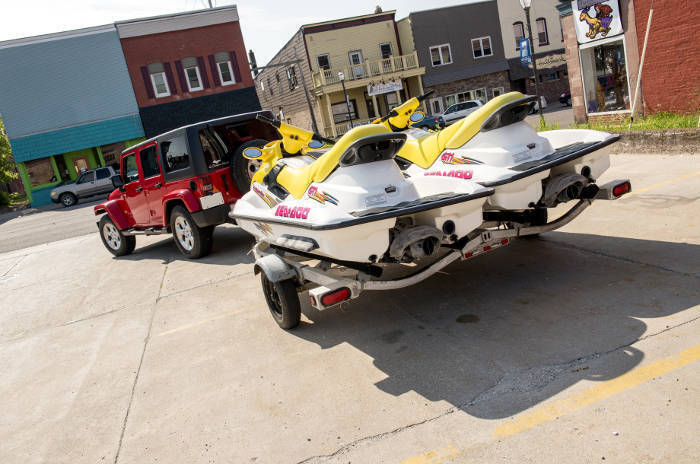

Step 6: Lock up your trailer while it is parked
Once you arrive at your destination, leaving your trailer coupled to your vehicle can be a great way to maintain security, and it saves you the time and hassle of disconnecting and coupling again when you leave.
However, if you need to uncouple your trailer, begin by removing the coupler lock with your key. Uncouple the trailer, following the standard process. Then, with the trailer disconnected, reengage the coupler latch and reinsert the coupler lock. This will help deter another vehicle from coupling to your trailer and stealing it.
Also consider applying a trailer tongue lock. A tongue lock installs over the coupler, preventing a trailer ball from being inserted. It can be used in tandem with a coupler latch lock. First, install the tongue lock, followed by the latch lock.
Learn more about how to select the right lock
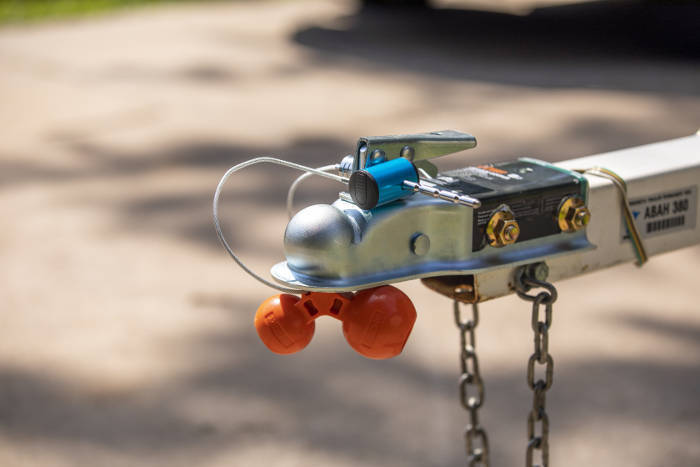

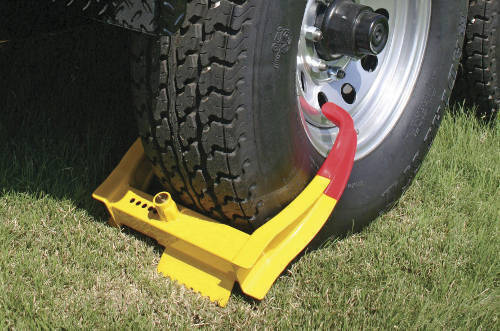

Bonus Step: For an added measure of security while your trailer is parked and left unattended, you can invest in a wheel chock lock. This type of lock clamps onto the trailer wheel and provides yet another obstacle for determined thieves.
A wheel chock lock is also a great security measure for your trailer when it is parked and not being used over extended periods of time.
Step 7: Keep your hitch lock with your ball mount
After you’ve finished towing and your trailer is uncoupled and parked, make sure you remove the ball mount from your receiver hitch. This will keep it protected from the elements and safe from potential theft.
Remove the hitch lock using the key, and then remove the ball mount. Insert the hitch locking pin back through the ball mount shank and secure it once more with the lock cylinder. Keeping your towing equipment together like this will help prevent lost pieces. Find a safe, dry location to store your ball mount, such as a compartment at the back of the vehicle.
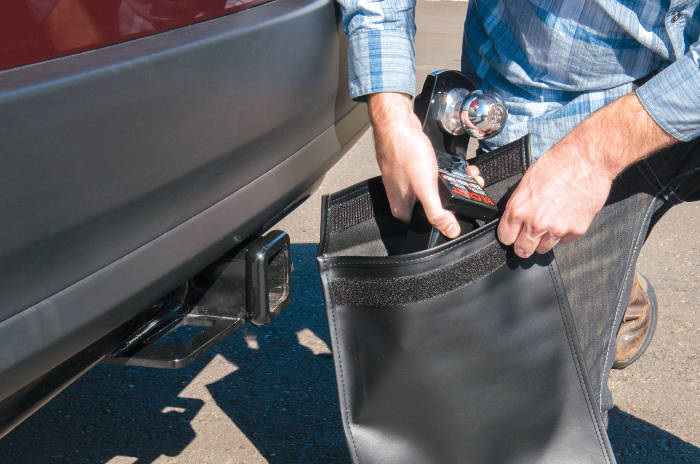

Additional Towing Security Measures
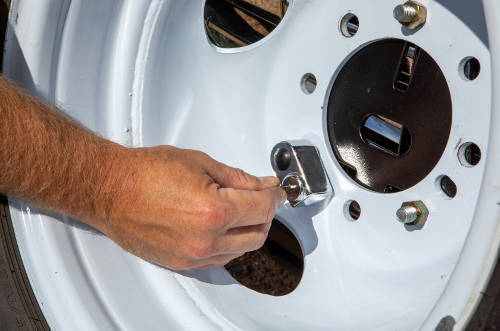

Spare tire lock
Now that you know how to lock a trailer and vehicle for towing, let’s discuss some added measures. If your trailer or vehicle has a spare tire mounted on it, consider buying a spare tire lock. This simple, subtle lock can be installed over one of the wheel bolts, keeping the tire secured to the vehicle under lock and key.
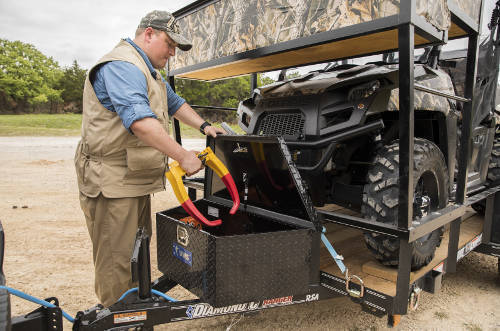

Trailer tongue box
A trailer tongue box is simply a storage box that mounts onto the front portion of your trailer’s frame. This tool box can be used to store essential towing equipment and to keep accessories on-hand. Best of all, trailer tongue boxes have an integrated locking latch, promoting theft resistance for your items.
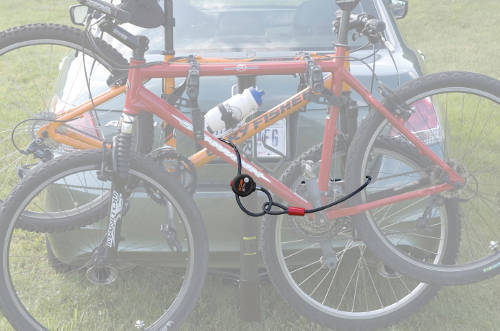

Cable lock for bikes
If you’re towing a bike rack with or without a trailer, a cable lock is recommended to protect the bikes. First, install a hitch lock to keep the bike rack fully secure in the receiver. Then, install the bike lock whenever your bikes are hung on the rack.


Cargo bag with lock for cargo carriers
If you’re hauling a hitch cargo carrier along with your trailer or just by itself, you can add security by using a CURT cargo bag. These weather-resistant vinyl bags come with a zipper closure that can accept a padlock. With the zippers pulled together and a padlock installed, your items are kept safe inside and protected from tampering.
 ARIES
ARIES  CURT
CURT  LUVERNE
LUVERNE  UWS
UWS 



